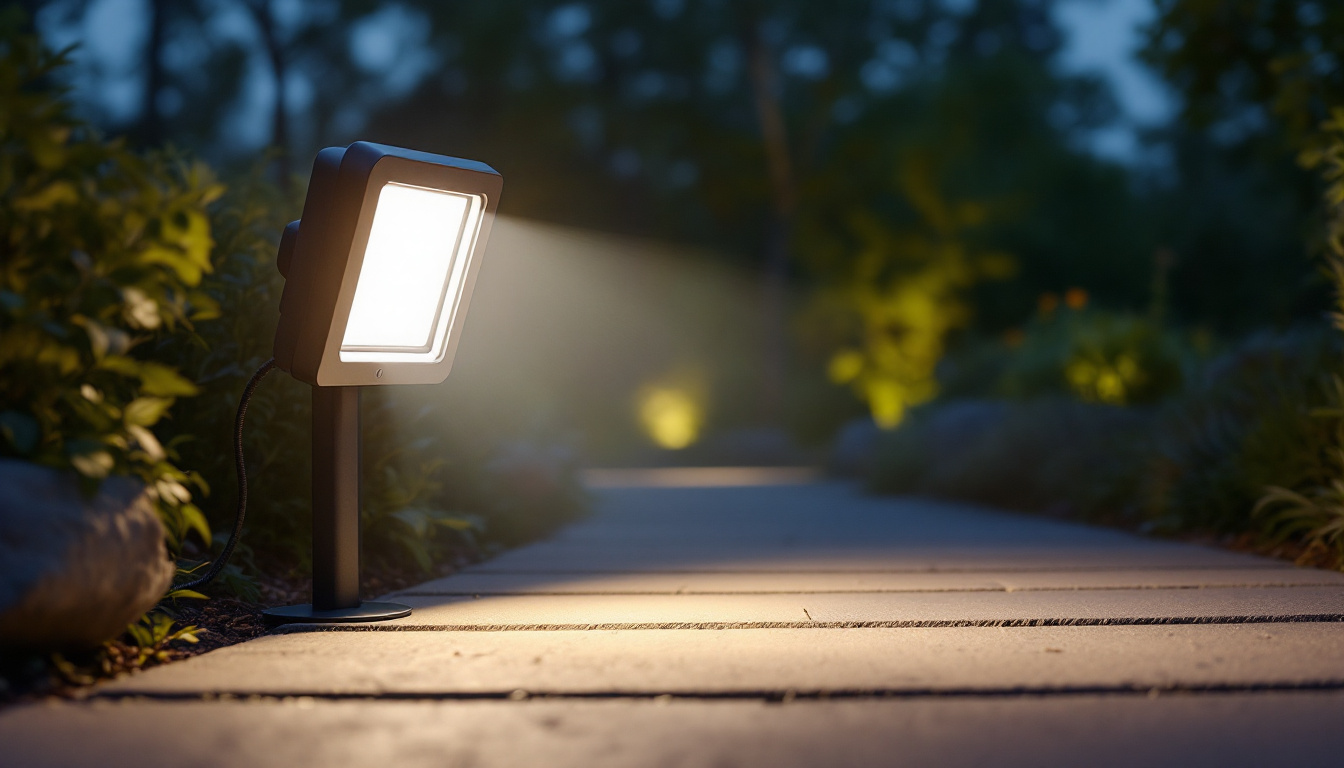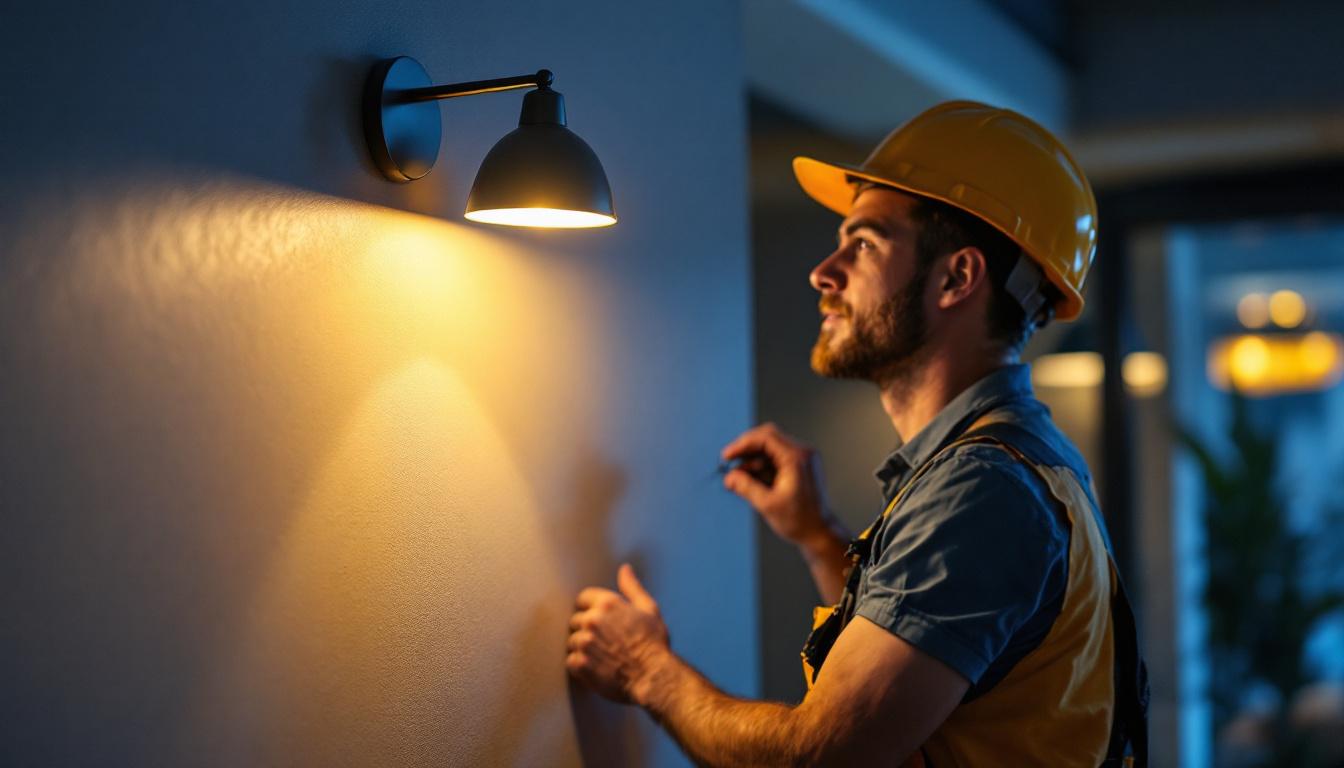
As the demand for sustainable and energy-efficient lighting solutions continues to rise, outdoor solar lights have become a popular choice for both residential and commercial applications. However, many lighting contractors may wonder how these systems perform during the colder months. This article delves into the specifics of outdoor solar lights that are effective in winter conditions, providing valuable insights for lighting contractors.
Solar lights operate by converting sunlight into electrical energy through photovoltaic cells. This energy is stored in batteries and used to power LED lights during the night. While this technology is straightforward, its efficiency can be significantly affected by environmental conditions, particularly in winter. The angle of the sun, the duration of daylight, and even the amount of snow or ice accumulation can impact how effectively solar panels gather energy. Thus, understanding these variables is essential for maximizing the performance of solar lighting systems throughout the year.
Photovoltaic cells are the heart of any solar lighting system. They require direct sunlight to generate electricity effectively. In winter, shorter days and overcast skies can limit the amount of sunlight available for charging. Therefore, selecting high-quality photovoltaic cells that can perform well under low-light conditions is crucial for winter performance. Additionally, advancements in solar technology have led to the development of bifacial solar panels, which can capture sunlight from both sides, thereby increasing energy production even when the sun is not shining directly on the cells. This innovation can be particularly beneficial in snowy regions where reflected sunlight can enhance energy absorption.
The batteries used in solar lights also play a vital role in their winter functionality. Most solar lights utilize lithium-ion or lead-acid batteries. While lithium-ion batteries tend to perform better in cold weather, lead-acid batteries can lose efficiency as temperatures drop. It is essential to choose solar lights with batteries that are rated for cold weather use to ensure optimal performance during winter months. Furthermore, the capacity of the battery is also a critical factor; batteries with a higher capacity can store more energy, allowing the lights to function longer during the night. Some manufacturers are now integrating smart technology into their solar lights, which can monitor battery health and optimize charging cycles based on environmental conditions, ensuring that the lights remain operational even during the harshest winter nights.
When selecting solar lights for winter installations, several factors must be considered to ensure reliability and efficiency. These include the type of solar light, battery quality, and additional features that enhance performance in cold conditions.
There are various types of solar lights available, including pathway lights, floodlights, and wall-mounted lights. For winter use, floodlights and wall-mounted lights are often more effective due to their ability to provide higher illumination levels and cover larger areas. Additionally, these types of lights can be strategically placed to maximize sun exposure during the day. Pathway lights, while charming and functional, may not provide the same level of brightness needed during the long, dark winter nights. However, they can still play a role in creating a warm, inviting atmosphere when used in conjunction with more powerful lighting options.
Investing in high-quality components is essential for ensuring the longevity and reliability of solar lights in winter. Look for lights that feature durable materials, such as corrosion-resistant metal and impact-resistant glass. These materials not only withstand harsh weather conditions but also enhance the overall aesthetic appeal of the installation. Additionally, consider solar lights with tempered glass lenses, which can help prevent fogging and maintain brightness, even in the coldest temperatures. The quality of the solar panel itself is also crucial; panels that are designed to capture sunlight effectively, even on overcast days, will ensure that your lights remain functional throughout the winter months.
Modern solar lights often come equipped with advanced features that improve their performance in winter. For instance, some models include motion sensors that activate the lights only when needed, conserving battery life. Others may have adjustable brightness settings, allowing for increased illumination during the darkest months. These features can significantly enhance the usability and efficiency of solar lighting systems in winter. Furthermore, some solar lights are designed with built-in timers, enabling users to set specific operating hours, which can help manage energy consumption and extend battery life. Smart technology integration is also becoming more common, with options for remote control or app connectivity, allowing users to monitor and adjust their lighting systems from anywhere, ensuring optimal performance regardless of the season.
Proper installation is critical for the performance of outdoor solar lights, especially in winter. Lighting contractors should pay attention to several key factors during the installation process to maximize the effectiveness of solar lights.
Placement is paramount for solar lights, as they need to receive adequate sunlight to charge effectively. When installing solar lights, consider the sun’s path throughout the day and position the lights in areas that receive maximum exposure. Avoid placing lights under trees or other structures that may cast shadows, particularly during the winter months when sunlight is limited.
The angle at which solar lights are installed can also affect their performance. In winter, the sun is lower in the sky, so adjusting the angle of the solar panel to capture more sunlight can improve charging efficiency. Some solar lights come with adjustable panels that can be tilted to optimize exposure.
To ensure outdoor solar lights continue to function effectively throughout the winter, regular maintenance is essential. Lighting contractors should advise clients on best practices for maintaining their solar lighting systems.
Dust, snow, and ice can accumulate on solar panels, blocking sunlight and reducing charging efficiency. Regularly cleaning the panels with a soft cloth can help maintain optimal performance. It is advisable to check the panels at least once a month during winter to ensure they are free from debris.
Monitoring battery health is crucial for the longevity of solar lights. Contractors should recommend that clients replace batteries as needed, especially if they notice a decline in performance. Additionally, ensuring that the batteries are stored in a warm environment during extreme cold can help prolong their lifespan.
While outdoor solar lights can be an excellent solution for winter lighting, they are not without challenges. Understanding these challenges can help lighting contractors provide better solutions to their clients.
One of the most significant challenges in winter is the limited number of daylight hours. This can lead to insufficient charging time for solar lights. To combat this, contractors can recommend solar lights with larger battery capacities, allowing them to store more energy for nighttime use. Additionally, installing multiple lights in a given area can help maintain adequate illumination levels.
Cold temperatures can reduce the efficiency of solar lights, particularly those with lower-quality components. Contractors should emphasize the importance of selecting products specifically designed for cold weather use. These products often feature improved insulation and weatherproofing, ensuring they can withstand harsh conditions.
Examining real-world applications of solar lights in winter can provide valuable insights for lighting contractors. Various case studies illustrate how effective solar lighting can be, even in challenging winter conditions.
In residential settings, solar lights have been successfully used to illuminate pathways, driveways, and gardens during winter. Homeowners have reported that high-quality solar lights, when installed correctly, provide sufficient illumination even on the darkest winter nights. By choosing models with robust batteries and efficient solar panels, these installations have proven to be both effective and energy-efficient.
Commercial properties have also benefited from the use of solar lighting in winter. For instance, parking lots and outdoor seating areas can be effectively illuminated with solar floodlights. These installations not only enhance safety but also reduce energy costs for businesses. Case studies show that businesses that invested in high-quality solar lighting systems experienced a significant reduction in their electricity bills during winter months.
The solar lighting industry is constantly evolving, with new technologies and trends emerging regularly. Staying informed about these trends can help lighting contractors remain competitive and provide the best solutions for their clients.
Smart technology is making its way into solar lighting systems, allowing for greater control and efficiency. Features such as app connectivity, remote monitoring, and automated dimming based on ambient light levels are becoming increasingly common. These advancements can enhance the functionality of solar lights, making them more appealing to clients.
As the push for renewable energy grows, integrating solar lighting with other renewable systems, such as wind or hydroelectric power, is becoming more feasible. This integration can provide a more reliable energy source, particularly in areas with inconsistent sunlight during winter months. Contractors who understand these systems will be better positioned to offer comprehensive solutions to their clients.
Outdoor solar lights can be a reliable and efficient lighting solution during winter months when selected and installed correctly. By understanding the technology behind solar lights, choosing the right products, and addressing common challenges, lighting contractors can provide valuable services to their clients. As the industry continues to evolve, staying informed about trends and advancements will ensure that contractors remain at the forefront of solar lighting solutions.
Ready to elevate your lighting solutions this winter? LumenWholesale is here to support lighting contractors with an exceptional range of high-quality, spec-grade outdoor solar lights designed to perform in the toughest winter conditions. Benefit from our unbeatable wholesale prices and enjoy the convenience of free shipping on bulk orders. Don’t let the middleman markups dim your project’s potential. Choose LumenWholesale for premium lighting at the best value, ensuring your installations shine bright all season long. Wholesale Lighting at the Best Value

Discover how motion flood lights can revolutionize your lighting projects by enhancing security, energy efficiency, and adaptability.

Discover how recessed LED strip lights can transform your lighting projects and help you secure more contracts.

Discover the top strategies lighting contractors use to maximize the impact of wall mount LED lights.

Discover the essentials of Type S Light technology in this comprehensive guide tailored for lighting contractors.